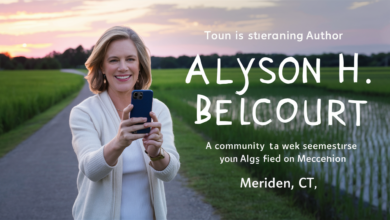Is Sketch From Dream Really Autistic? What We Know.

Hey everyone! Ever spent hours laughing at SpongeBob SquarePants? It’s a show that’s brought joy to so many, and behind that joy was a brilliant mind: Stephen Hillenburg. Lately, there’s been a lot of talk online a really interesting conversation, actually about whether Stephen Hillenburg might have been autistic. It’s a question that comes from a place of love and appreciation for his work, and a desire to understand the person behind the pineapple under the sea.
Now, we can’t know for sure unless someone directly involved confirms it, but let’s explore the reasons why people are asking this question, and what clues we can find in his life and work. This isn’t about labeling someone after the fact, but about recognizing and celebrating neurodiversity, and how different brains can create amazing things. I’m going to share my thoughts, some observations, and even a little bit about my own experiences as someone who’s neurodivergent, to help us think about this in a thoughtful way.
What Makes People Think Stephen Hillenburg Was Autistic?
So, what sparked this conversation? It’s not just a random guess! A lot of it comes down to noticing patterns in Stephen Hillenburg’s personality and the themes in SpongeBob. People have pointed to his intense focus on marine biology – he actually had a master’s degree in it! – and how that passion fueled the entire show. That deep dive (pun intended!) into a specific interest is something a lot of autistic people relate to. We often have “special interests” that we can talk about for hours, and research endlessly, and that bring us immense joy.
I remember when I was a kid, I was obsessed with dinosaurs. Not just a casual liking, but I knew every species, their diet, their time period, everything! I’d correct my teachers (much to their annoyance, probably!) and spend all my allowance money on dinosaur books and toys. It wasn’t just a hobby; it was a whole world I needed to understand. Seeing Hillenburg’s dedication to marine life feels similar – a genuine, all-consuming passion.
Beyond that, people have noted the quirky, often absurd humor of SpongeBob. It’s not always about punchlines; it’s about unexpected situations, repetitive gags, and a general sense of delightful chaos. This kind of humor can resonate strongly with autistic people, who often appreciate things that are a little “off” or unconventional. It’s a different way of seeing the world, and SpongeBob reflects that beautifully.
The Details in the Details: A Love for Patterns & Repetition
Another thing people have pointed out is the show’s attention to detail. Bikini Bottom is a meticulously crafted world, full of visual gags and recurring elements. The Krusty Krab always looks the same, Squidward’s house is always gloomy, and certain jokes reappear throughout the series. This love for consistency and patterns is another trait often seen in autistic individuals.
For me, patterns are soothing. I used to line up my toys in very specific ways, and if anything was out of place, it would really bother me. It wasn’t about being “perfect,” it was about needing order and predictability. I think that the need for order can sometimes translate into a love for detail and a desire to create structured environments, which might explain the consistent world-building in SpongeBob.
And let’s not forget the characters themselves! Squidward, with his rigid routines and social awkwardness, has become something of an icon for autistic viewers. While he’s a grumpy character, many people see themselves in his struggles with social interaction and his preference for solitude.
Why It Matters: Celebrating Neurodiversity
Now, why does this conversation even matter? Why are people so interested in figuring this out? It’s not about changing how we view SpongeBob, which is a masterpiece regardless. It’s about representation. Seeing successful, creative people who might be neurodivergent can be incredibly empowering for autistic individuals. It shows that different brains can thrive and contribute amazing things to the world.
Growing up, I rarely saw characters on TV who felt like me. I felt like I was always on the outside looking in. If I had seen more representation of neurodiversity, I think I would have understood myself better and felt less alone. So, even if we can’t definitively say whether Stephen Hillenburg was autistic, the conversation itself is valuable. It opens up a dialogue about neurodiversity and encourages us to appreciate the unique perspectives that different people bring.
Conclusion: A Legacy of Joy and Maybe, Understanding
Ultimately, we may never know for sure if Stephen Hillenburg was autistic. But the fact that so many people are asking the question, and finding connections between his life, his work, and the autistic experience, is a testament to his genius and the enduring power of SpongeBob SquarePants. Whether he was or wasn’t, his creation has brought joy to millions, and it continues to resonate with people of all neurotypes. Let’s celebrate his legacy and continue to embrace neurodiversity in all its forms.
FAQ:
Q: Is this just speculation?
A: Yes, it is! We don’t have a definitive answer. This is based on observations and interpretations of his life and work.
Q: Why is it important to be respectful when discussing this?
A: It’s important to remember that we’re talking about a real person, and we want to avoid making assumptions or reducing his life to a label. The goal is to celebrate his work and explore the possibility of neurodiversity with sensitivity and respect.
Q: Where can I learn more about autism?
A: Here are a few great resources:
- Autism Speaks: https://www.autismspeaks.org/
- The Autistic Self Advocacy Network (ASAN): https://autisticadvocacy.org/
- National Autistic Society (UK): https://www.autism.org.uk/



